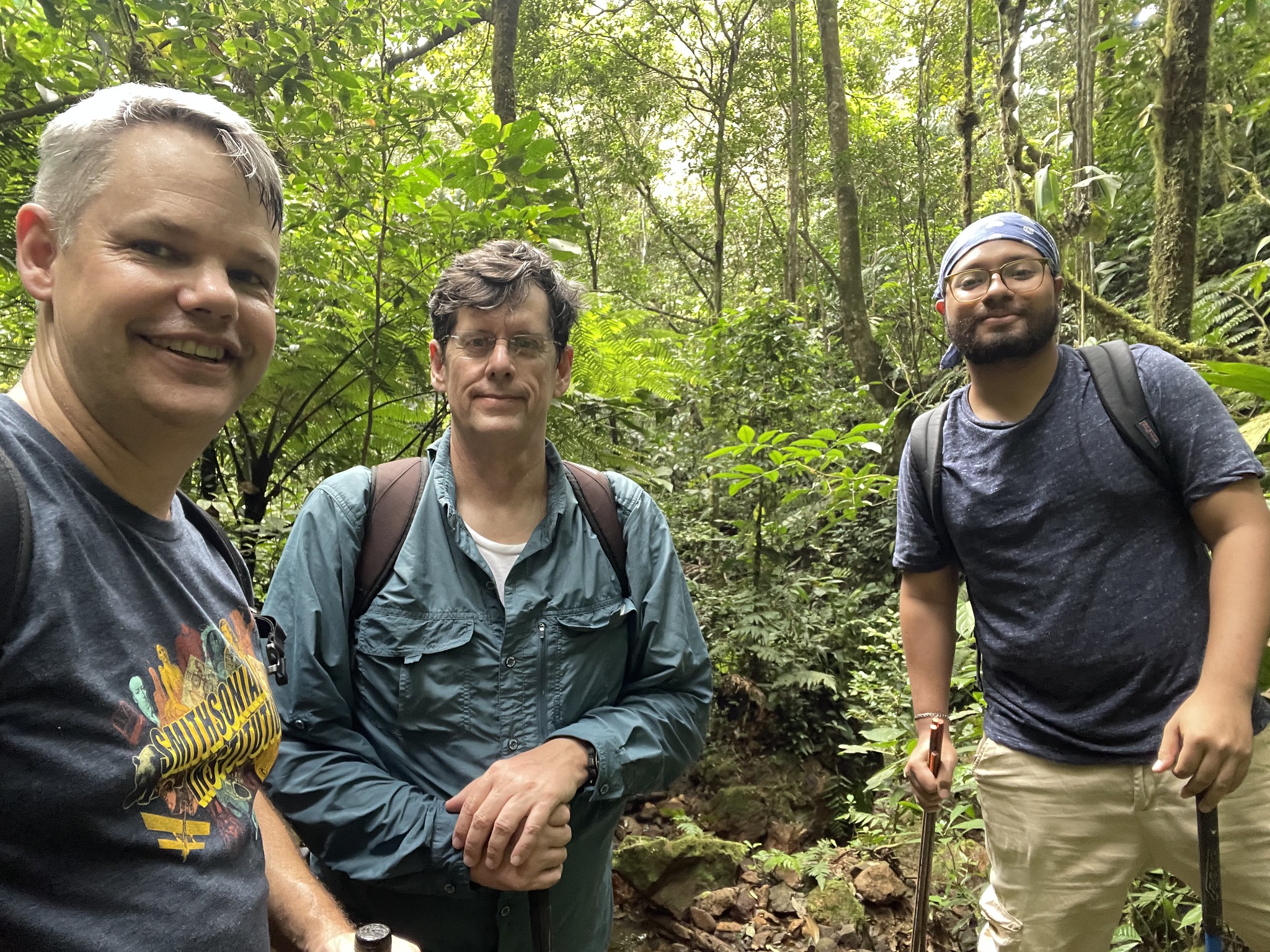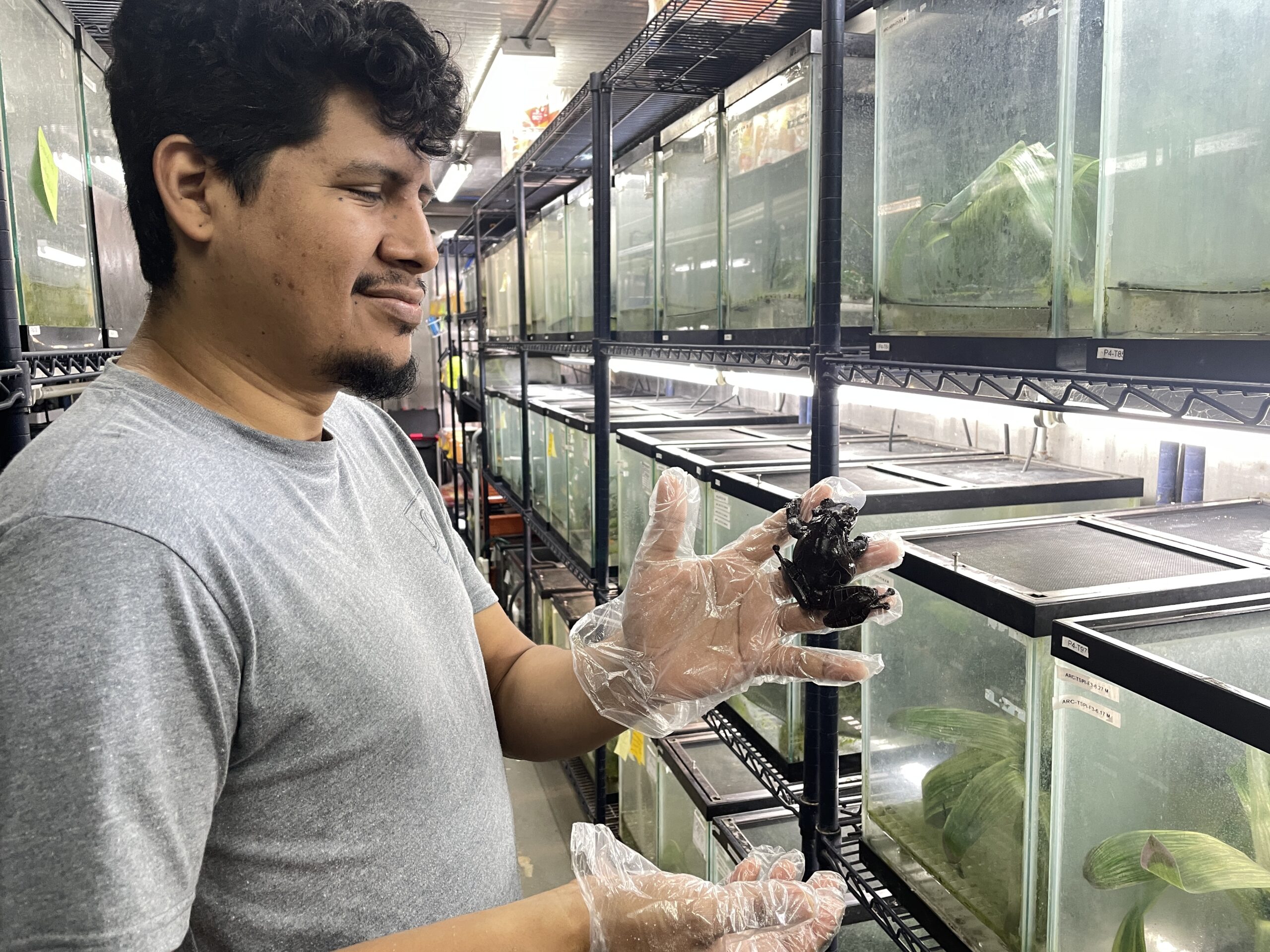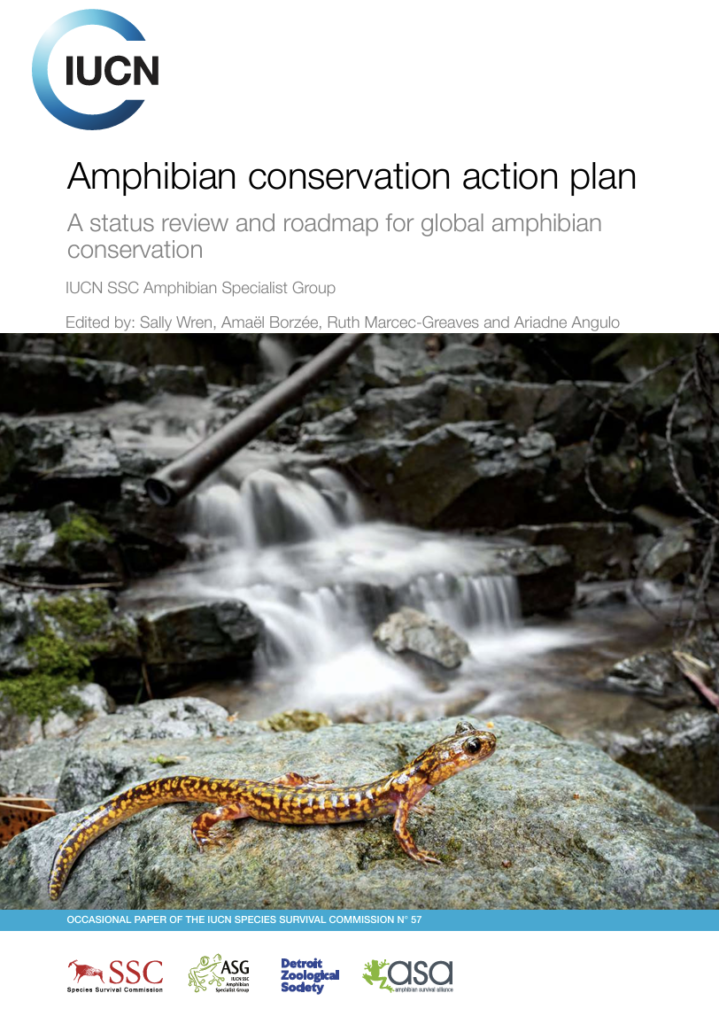In recent decades, habitat loss, environmental change, and a deadly chytrid fungus has decimated amphibian species around the world. Thanks to a new $2 million grant from the Bezos Earth Fund, the Smithsonian Tropical Research Institute (STRI) and the Smithsonian National Zoological Park Conservation Biology Institute (NZCBI), in partnership with the Amphibian Survival Alliance (ASA), launched a transformative five-year project spanning Panamá, Venezuela, Ecuador and Colombia: The Tropical Amphibian Resilience Initiative (TARI). This initiative represents an unprecedented opportunity to address amphibian conservation across Latin America.
“This is an unprecedented opportunity for amphibian conservation,” stated ASA’s Executive Director Gina Della Togna. “For the first time, we are launching a coordinated international effort to halt amphibian extinctions in the Neotropics, a region that harbors 48% of the world’s amphibian biodiversity. It’s a powerful testament to what collaboration and joining forces can achieve for endangered species, and a sobering reminder of how much help amphibians need.”

The grant empowers collaborations among international partners, including the Panama Amphibian Rescue and Conservation Project, a conservation partnership between the Smithsonian, Cheyenne Mountain Zoo and Zoo New England. The coalition is building safety-net populations of frog species at risk of extinction from the deadly fungus.
The Amphibian Survival Alliance, the world’s largest global partnership dedicated to the conservation of amphibians and their habitats, rallies collaborators from high amphibian biodiversity landscapes, including Parque Explora (Colombia), FUDECI (Venezuela), and Centro Jambatu de Investigación y Conservación de Anfibios (Ecuador), to deliver regional impact and coordinate on-the-ground conservation actions in key amphibian biodiversity hotspots.
The Bezos donation catalyzes conservation by targeting landscapes with the highest amphibian biodiversity on Earth. This initiative will serve as a model for regional collaboration and knowledge-sharing, ensuring a lasting impact on amphibian populations and their habitats.

“Amphibians are the most threatened vertebrates on the planet, yet they receive far less attention than other at-risk species,” said Dr. Cristián Samper, Managing Director and Leader for Nature Solutions at the Bezos Earth Fund. “This partnership between the Bezos Earth Fund and the Smithsonian is about turning the tide, combining cutting-edge science with urgent action to save these species from extinction. By investing in regional collaboration, we are laying the foundation for amphibian conservation that will have a lasting impact.”
The international team of scientists are pioneering new methods to recover amphibian populations affected by fungal diseases and other major threats, rewild native frogs raised in captivity, and identify habitats critical for amphibian conservation.
The project strengthens captive breeding programs for 25 of the region’s most endangered species, with a goal of boosting captive populations by 15% over five years. It also expands conservation expertise across Latin America, offering training workshops in small-population management and launching a regional Amphibian Biobank to safeguard the genetic diversity of at least 25 critically endangered frog species.

As part of decision-making and community engagement, the project contributes to updating National Amphibian Action Plans for the four countries, aligning them with international biodiversity targets and action plans; and engages over 1,000 students annually through outreach programs and public seminars to raise awareness about amphibians.
“I am deeply grateful to the Bezos Earth Fund for their trust in this partnership and their commitment to conserving the most threatened group of vertebrates on the planet. I am equally thankful to our incredible partners, whose expertise and dedication have made this ambitious initiative possible,” added Della Togna.
This collaboration paves the way for a sustainable future for amphibians and their ecosystems by combining the scientific rigor and institutional strength of STRI with the expertise and regional leadership of ASA. Together, this partnership demonstrates the power of global collaboration in addressing urgent biodiversity challenges and ensuring Life on a Sustainable Planet.


